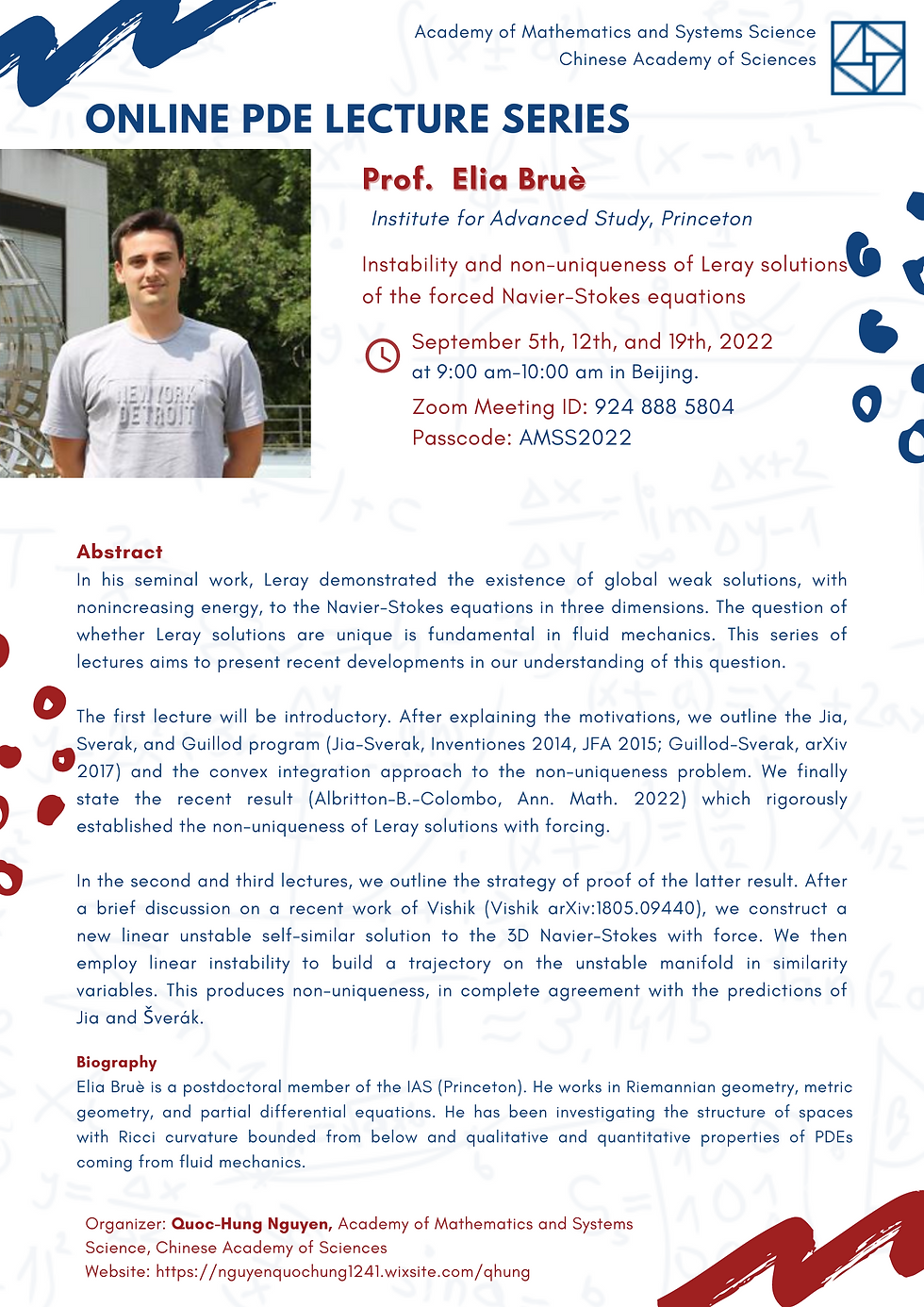ONLINE PDE LECTURE SERIES 3
- Quoc-Hung Nguyen

- Sep 3, 2022
- 2 min read
Updated: Sep 19, 2022
Organizer: Quoc-Hung Nguyen, the Academy of Mathematics and Systems Science, Chinese Academy of Sciences.

Speaker: Professor Elia Bruè, Institute for Advanced Study, Princeton
Title:Instability and non-uniqueness of Leray solutions of the forced Navier-Stokes equations
Abstract: In his seminal work, Leray demonstrated the existence of global weak solutions, with nonincreasing energy, to the Navier-Stokes equations in three dimensions. The question of whether Leray solutions are unique is fundamental in fluid mechanics. This series of lectures aims to present recent developments in our understanding of this question.
The first lecture will be introductory. After explaining the motivations, we outline the Jia, Sverak, and Guillod program (Jia-Sverak, Inventiones 2014, JFA 2015; Guillod-Sverak, arXiv 2017) and the convex integration approach to the non-uniqueness problem. We finally state the recent result (Albritton-B.-Colombo, Ann. Math. 2022) which rigorously established the non-uniqueness of Leray solutions with forcing.
In the second and third lectures, we outline the strategy of proof of the latter result. After a brief discussion on a recent work of Vishik (Vishik arXiv:1805.09440), we construct a new linear unstable self-similar solution to the 3D Navier-Stokes with force. We then employ linear instability to build a trajectory on the unstable manifold in similarity variables. This produces non-uniqueness, in complete agreement with the predictions of Jia and Šverák.
Lecture 1: Video link, Slides
Lecture 2: Video link, Slides
Lecture 3: Video link, Slides
Zoom ID:924 888 5804 Password:AMSS2022
Time:
Monday, September 5th 2022, 9:00-10:00 am in Beijing time
Monday, September 12th 2022, 9:00-10:00 am in Beijing time
Monday, September 19th 2022, 9:00-10:00 am in Beijing time
Biography: Elia Bruè is a postdoctoral member of the IAS (Princeton). He works in Riemannian geometry, metric geometry, and partial differential equations. He has been investigating the structure of spaces with Ricci curvature bounded from below and qualitative and quantitative properties of PDEs coming from fluid mechanics.



Comments